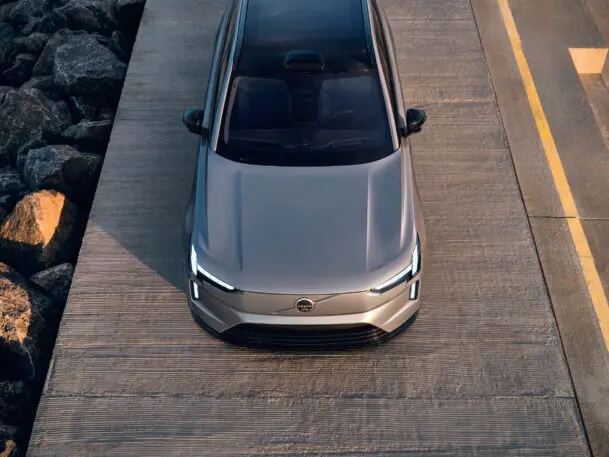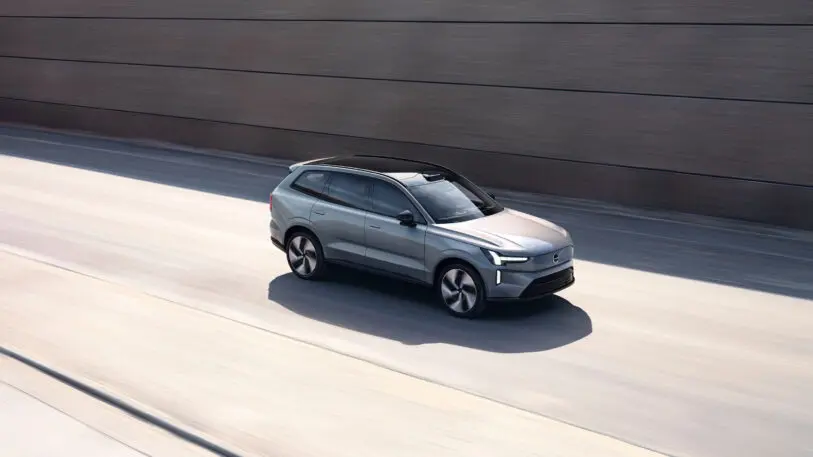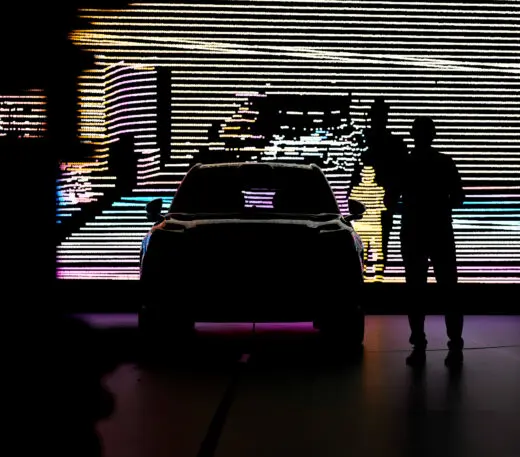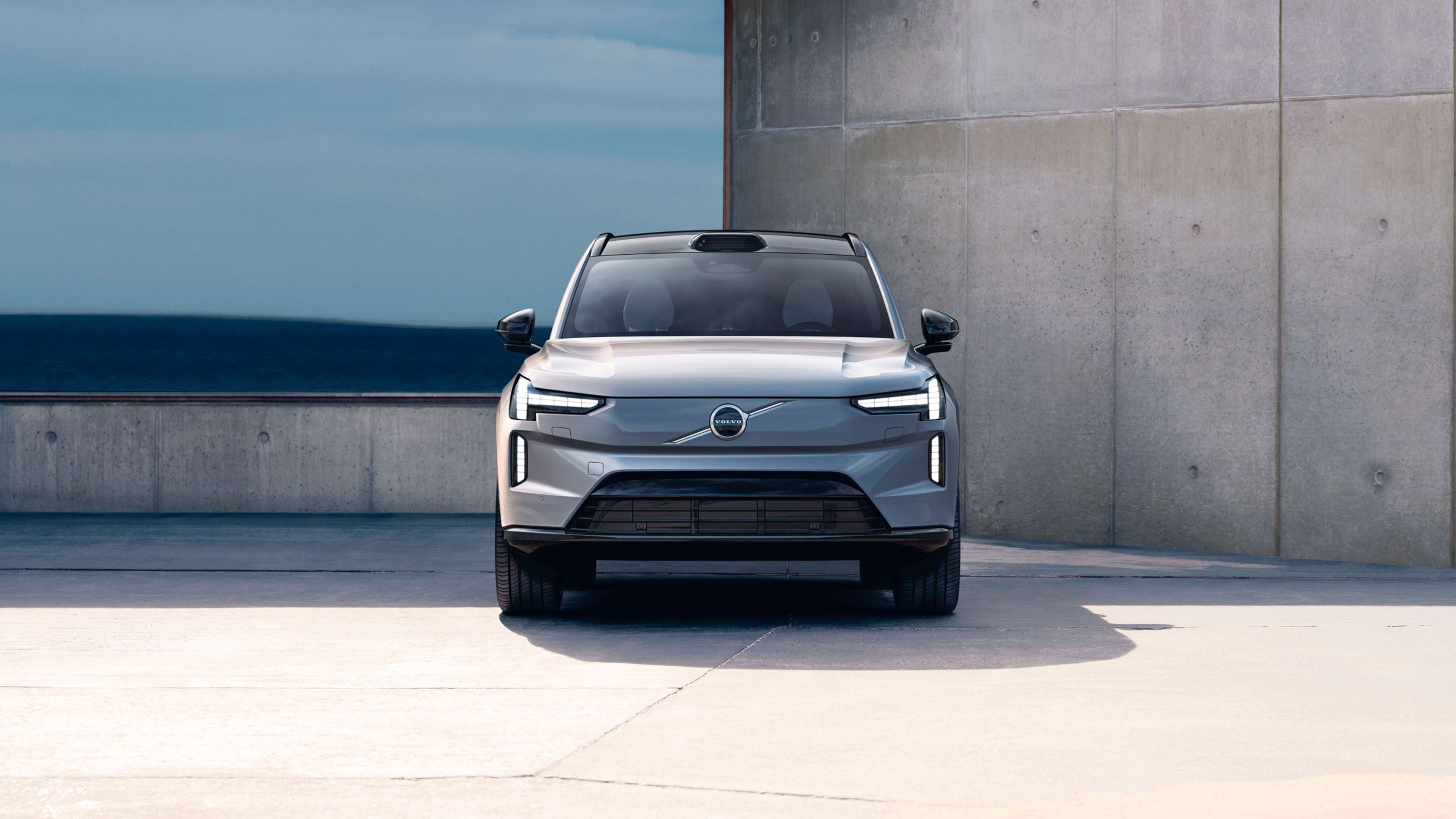The driverless vehicle of the near(ish) future will be a car loaded with sensors. Cameras, radar, and laser-based lidar will become as common to cars as chrome accents and elaborately designed headlights. But unlike those design features, the hardware of autonomy probably won’t look so good—bumping off from the corners like warts, poking out of the roof like a cartoon police siren, or even moving and winking like literal cartoon googly eyes. If the fully autonomous vehicles now being tested are any indication, adding dozens of sensors and devices into and onto cars will result in very clunky designs.

Luminar has a solution. In collaboration with Volvo, the automotive technology company has created a long-range lidar system that underpins autonomous driving while also sleekly integrating into the shape and silhouette of the car. Almost invisible, the device sits within the car’s roofline, providing an overhead view of the road ahead that can detect objects and hazards nearly 1,000 feet away. The device will come standard in the 2024 Volvo EX90, and could soon be blending into the roofs of other vehicles around the world.
It’s a novel design approach for the sensor-dependent future of cars. It’s also been an uphill slog to get carmakers on board. The company immediately recognized “that designers of cars are not going to like this; they are not going to want to mess with the overall silhouette of the vehicle,” says Aaron Jefferson, VP of product for Luminar. “But it’s very important in terms of the functionality.
“The design teams usually push back in the beginning, but the engineering teams understand having that perspective in the vehicle is important,” Jefferson adds.
Being high up on the car, the lidar system, called Iris, has a wider and deeper view than it could if it were tucked into the usual places sensors go, like behind the fascia on the grille, inside the headlights, or even near the rearview mirror. The device has a 120-degree horizontal field of view, and 26 degrees vertically; it can detect vehicles, pedestrians, cyclists, road edges, and hazards such as matte black tire chunks in the lane ahead. “We really get the context of a scene from all this laser information coming back,” Jefferson says.

Luminar’s device makes a car capable of Level 4 automated driving, in which drivers can, in certain road conditions like highway driving, essentially let the car take over and drive itself (Volvo will use it for its “enhanced driver assistance” features). It’s one step below full autonomy, with no human in the driver’s seat, and not yet legal outside test cases. The Iris lidar system was designed to make this possible without grossly affecting the overall look of the car.
Other AV companies have taken different approaches. Waymo, the autonomous car division of Alphabet now operating fleets of driverless vehicles in Arizona and California, has designed a set of hardware intended to be clamped on to existing vehicles, bulging out from the car’s body like a rooftop taxi light. These high-tech add-on accessories turn typical production passenger cars and cargo trucks into self-driving-ready robot vehicles.
Luminar’s approach gets the AV sensors into the cars at the design phase. Volvo’s EX90 will be the first vehicle available in the U.S. with this technology, and Jefferson says Luminar’s design and engineering teams had to work very closely with the automaker to get the technology into place on the roofline—hardly an unobtrusive location. “Volvo’s technical team and our teams were able to convince Volvo’s styling team that it truly was necessary to be in that space,” he says. “It still took some persuasion.”

“The talks quickly evolved from purely how do we make it fit to how do we make this look nice,” he adds.
And though the device is integrated smoothly into the front of the vehicle, it’s not completely hidden. Jefferson says it became an important design move to have the sensor be somewhat visible as a way of indicating the car has special capabilities.
Luminar frames the technology as safety-focused, improving the sensing and detection that triggers a car to brake on its own or avoid a collision. “Most of the fatalities happen at higher speeds than what we test for today because the current sensors just can’t handle detection and making a decision in a high-speed scenario,” Jefferson explains. Working with Volvo, a brand that has long been associated with traffic safety, was an obvious fit—and an active collaboration—according to Jefferson. “I think it spoiled us to the point where we felt like every [automaker] should be willing to have that level of collaboration,” he says.
The concept is taking hold, though. The technology has been integrated into the design of Chinese carmaker Rising Auto’s electric midsize SAIC R7 now in production. And Jefferson says Luminar has deals with Nissan and “a European customer,” and that several conversations with other automakers are underway.

It’s been a quick change from Luminar’s efforts to sell carmakers on the integrated approach to this kind of sensor as recently as last year. Many “were hell-bent against the roofline, and now we almost see it as a requirement from them,” Jefferson says.
Auto manufacturers still want the sensor to be less obtrusive, though. One customer would consider the device only if it were 10 millimeters smaller. “I said, so we could potentially lose this business over 1 centimeter? And the answer was yes,” Jefferson says.
Luminar got the message. The second iteration of Iris, now being marketed to carmakers around the world, is 10 millimeters shorter.
Recognize your brand’s excellence by applying to this year’s Brands That Matter Awards before the early-rate deadline, May 3.
